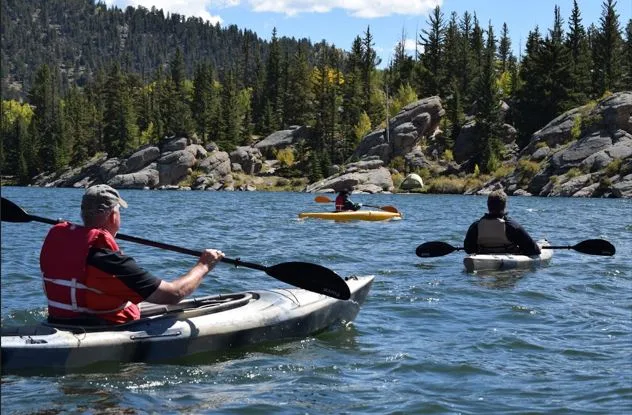How to Choose the Right Kayak for Your Lifestyle
Whether you’re an adventurer chasing whitewater thrills, a weekend angler looking for the perfect catch, or someone who simply wants to enjoy peaceful paddles on the lake, choosing the right kayak can transform your experience on the water. With so many styles, materials, and features available, selecting the ideal kayak may feel overwhelming.
The right kayak isn’t just about performance—it’s about fitting into your lifestyle, matching your goals, and making every trip more enjoyable. For those looking to invest in a reliable watercraft, Bay Sports provides detailed guides and a variety of kayak options tailored to different needs.
- Understand Your Primary Use
Before you even start looking at kayak brands and models, consider how and where you’ll use it. Your primary activity will strongly influence the best type of kayak for you.
Recreational Use
If your plan is casual paddling on lakes, slow rivers, or coastal bays, a recreational kayak is a great choice. These kayaks are typically 9 to 12 feet long, wide for stability, and easy to maneuver. They’re ideal for beginners and those who value comfort and ease of use over performance.
Touring or Sea Kayaking
Planning longer trips on open water or covering long distances? Touring kayaks (also known as sea kayaks) are built for efficiency and speed. They’re longer (typically 12-17 feet), narrower, and often have a rudder or skeg to help track straight in wind and waves.
Whitewater Adventures
If your dream kayak outing involves rushing rapids, waterfalls, or technical maneuvering, a whitewater kayak is the tool for the job. These are shorter, more curved boats designed for agility and durability in turbulent waters.
Fishing
Kayak fishing has exploded in popularity, and for good reason. Fishing kayaks are stable, often wide, and come with features like rod holders, gear tracks, and even pedal systems. Many are sit-on-top models, which are easier to get in and out of.
Multi-Purpose
If you’re not yet sure what your favorite activity is, consider a hybrid or crossover kayak. These offer a mix of stability, moderate tracking ability, and enough versatility to allow for some fishing, light touring, and recreational paddling.
- Sit-In vs. Sit-On-Top Kayaks
One of the most fundamental design differences you’ll encounter is between sit-in and sit-on-top kayaks. Each has pros and cons depending on your preferences and environment.
Sit-In Kayaks
- Better protection from the elements (great for colder water)
- More efficient paddling and tracking
- Drier and often faster
- Ideal for touring and cold weather paddling
Sit-On-Top Kayaks
- Easier to get in and out (great for beginners or warm weather)
- Better for fishing or swimming
- Self-bailing (they have scupper holes to drain water)
- More stable and forgiving
Choose a sit-on-top if you value comfort, ease of access, or plan to paddle in warm climates. Choose a sit-in for longer trips, better performance, or colder conditions.
- Consider the Kayak’s Size and Shape
Length
- Shorter kayaks (under 12 feet): More maneuverable, better for small lakes or rivers
- Longer kayaks (12-17 feet): Faster and track straighter, better for open water or long trips
Width
- Wider kayaks: More stable but slower
- Narrower kayaks: Less stable at first but faster and better for experienced paddlers
Weight and Carrying Capacity
Always check the maximum weight capacity, especially if you’re bringing gear or fishing equipment. Also, consider how much the kayak itself weighs—will you need help carrying it? Do you need to lift it onto a car roof?
- Material Matters
Kayaks come in several materials, each affecting weight, durability, and cost.
Plastic (Polyethylene)
- Affordable and durable
- Heavier and less efficient
- Best for beginners, budget-conscious buyers, or rugged conditions
Composite (Fiberglass, Kevlar, Carbon)
- Lightweight and high-performance
- More expensive and prone to damage from impacts
- Ideal for serious paddlers and touring
Inflatable
- Easy to store and transport
- Surprisingly durable with high-quality models
- Great for casual users, travel, or those with limited storage
- Features That Match Your Lifestyle
Think about what accessories or features matter most to you.
For Fishing
- Rod holders
- Tackle storage
- Pedal drive or trolling motor compatibility
- Anchor system
For Touring
- Dry storage hatches
- Deck rigging for gear
- Rudder or skeg for tracking
- Comfortable seat with lumbar support
For Recreation
- Cup holders
- Adjustable foot braces
- Open cockpit or wide seat
- Lightweight for easy transport
- Transportation and Storage
Do you have a garage or a place to store a 12-foot kayak? If not, you may want to consider a foldable or inflatable kayak. These models are ideal for apartment dwellers, people without roof racks, or anyone with limited space.
For transportation, you’ll also need to factor in:
- Roof rack or trailer for hardshell kayaks
- Carry handles and weight for solo transport
- Storage bags for inflatables or folding models
- Test Before You Buy
Whenever possible, try a kayak before you buy it. Many outdoor retailers and paddling clubs offer demo days or rental programs. This is the best way to find out if a kayak truly feels right for you.
Here’s what to evaluate during your test:
- Is the seat comfortable?
- Do you feel stable?
- Can you get in and out easily?
- Does the kayak track well and respond to your strokes?
- Budget Considerations
Kayaks range from a few hundred dollars to several thousand. Set a budget that reflects how often and seriously you plan to use your kayak.
Entry-level (under $600): Basic plastic kayaks, perfect for recreational use
Mid-range ($600–$1,200): Better features, performance, and durability
High-end ($1,200+): Lightweight materials, top-tier design, specialized features
Don’t forget to budget for accessories:
- Paddle (essential)
- Life vest (required)
- Dry bags, storage boxes
- Safety gear (whistle, pump, rope)
- Think Long-Term
Choose a kayak that suits not only your current needs but also your aspirations. If you think you’ll get more serious about kayaking over time, it might be worth investing in a better model from the start—or at least one with room to grow into.
Consider:
- Will your needs change with the seasons?
- Do you want to bring a dog, child, or another paddler later?
- Do you plan to travel with your kayak?
Conclusion
Choosing the right kayak is all about matching the boat to your lifestyle, goals, and paddling environment. Whether you crave quiet solitude on a still lake, the adrenaline of rapid water, or the satisfaction of reeling in a big catch, there’s a perfect kayak out there for you.
Take your time to research, test models if possible, and think beyond just the price tag. With the right kayak, every trip to the water becomes an adventure uniquely your own.




